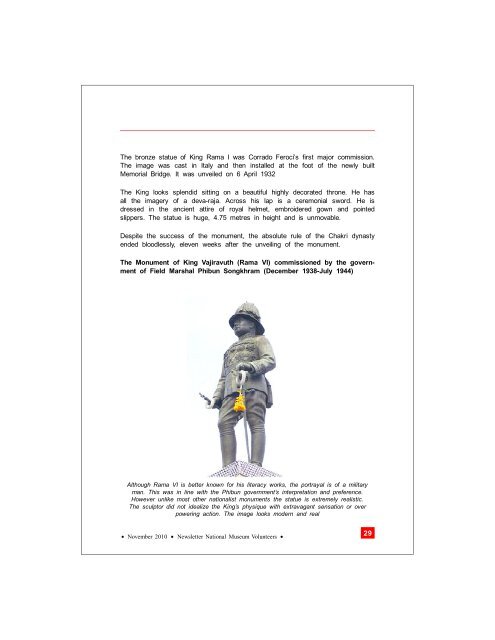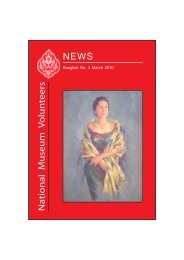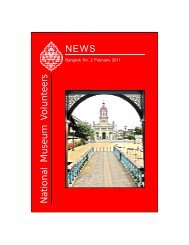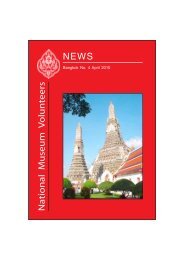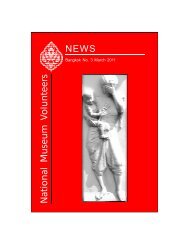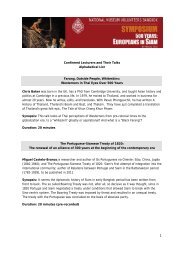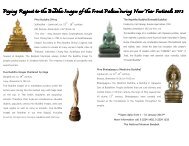November 2010 - National Museum Volunteers
November 2010 - National Museum Volunteers
November 2010 - National Museum Volunteers
You also want an ePaper? Increase the reach of your titles
YUMPU automatically turns print PDFs into web optimized ePapers that Google loves.
The bronze statue of King Rama I was Corrado Feroci’s first major commission.<br />
The image was cast in Italy and then installed at the foot of the newly built<br />
Memorial Bridge. It was unveiled on 6 April 1932<br />
The King looks splendid sitting on a beautiful highly decorated throne. He has<br />
all the imagery of a deva-raja. Across his lap is a ceremonial sword. He is<br />
dressed in the ancient attire of royal helmet, embroidered gown and pointed<br />
slippers. The statue is huge, 4.75 metres in height and is unmovable.<br />
Despite the success of the monument, the absolute rule of the Chakri dynasty<br />
ended bloodlessly, eleven weeks after the unveiling of the monument.<br />
The Monument of King Vajiravuth (Rama VI) commissioned by the government<br />
of Field Marshal Phibun Songkhram (December 1938-July 1944)<br />
Although Rama VI is better known for his literacy works, the portrayal is of a military<br />
man. This was in line with the Phibun government’s interpretation and preference.<br />
However unlike most other nationalist monuments the statue is extremely realistic.<br />
The sculptor did not idealize the King’s physique with extravagant sensation or over<br />
powering action. The image looks modern and real<br />
. <strong>November</strong> <strong>2010</strong> . Newsletter <strong>National</strong> <strong>Museum</strong> <strong>Volunteers</strong> . 29


